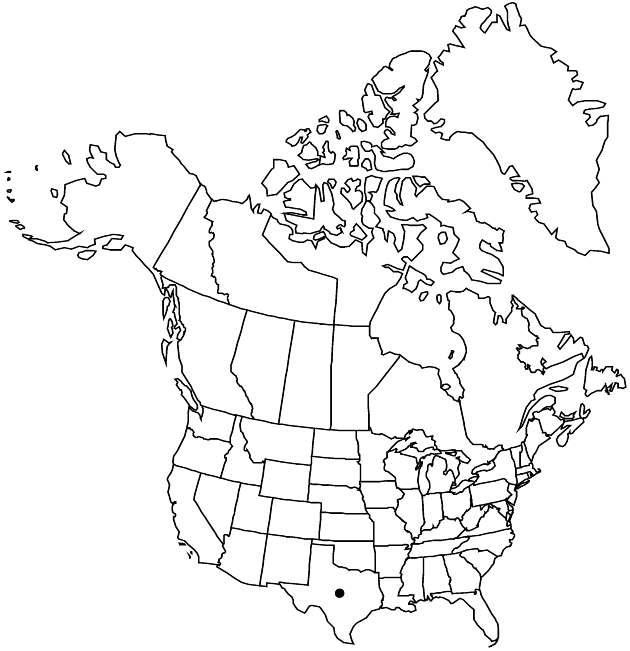Difference between revisions of "Perityle vitreomontana"
SouthW. Naturalist 12: 475, fig. 1. 1967.
FNA>Volume Importer |
imported>Volume Importer |
||
| (One intermediate revision by the same user not shown) | |||
| Line 8: | Line 8: | ||
}} | }} | ||
|common_names=Glass Mountain rock daisy | |common_names=Glass Mountain rock daisy | ||
| + | |special_status={{Treatment/ID/Special_status | ||
| + | |code=E | ||
| + | |label=Endemic | ||
| + | }}{{Treatment/ID/Special_status | ||
| + | |code=C | ||
| + | |label=Conservation concern | ||
| + | }} | ||
|basionyms= | |basionyms= | ||
|synonyms= | |synonyms= | ||
| Line 47: | Line 54: | ||
|publication title=SouthW. Naturalist | |publication title=SouthW. Naturalist | ||
|publication year=1967 | |publication year=1967 | ||
| − | |special status= | + | |special status=Endemic;Conservation concern |
| − | |source xml=https:// | + | |source xml=https://bitbucket.org/aafc-mbb/fna-data-curation/src/2e0870ddd59836b60bcf96646a41e87ea5a5943a/coarse_grained_fna_xml/V19-20-21/V21_792.xml |
|tribe=Asteraceae tribe Heliantheae | |tribe=Asteraceae tribe Heliantheae | ||
|subtribe=Asteraceae (tribe Heliantheae) subtribe Peritylinae | |subtribe=Asteraceae (tribe Heliantheae) subtribe Peritylinae | ||
Latest revision as of 20:14, 5 November 2020
Plants 3–10 cm (densely leafy); pilose. Leaves: petioles 2–4 mm; blades subovate to ovate-deltate, 5–7(–10) × 5–8(–12) mm, margins obtuse-serrate to incised-lobed. Heads usually in corymbiform arrays, rarely borne singly, 6–7 × 3–4 mm. Peduncles 1–3(–8) mm. Involucres narrowly campanulate. Phyllaries 9–12, linear-lanceolate, 4–5 × 0.8–1.2 mm. Disc florets 11–16; corollas white, tubes 1 mm, throats tubular, 2.5 mm, lobes 1 mm. Cypselae 1.9–2 mm; pappi of 2–6 bristles 0.5–2 mm plus vestigial nubs between bristles, or of 10–20 bristles 0.1–2 mm. 2n = 34.
Phenology: Flowering spring–fall.
Habitat: Limestone bluffs
Elevation: 1500–2200 m
Discussion
Of conservation concern.
Perityle vitreomontana is known only from in the Glass Mountains of Brewster County. Although P. vitreomontana resembles P. bisetosa, close study of the pappus reveals that it belongs in sect. Pappothrix. Leaf and flower morphology suggest the relationship of P. vitreomontana to P. rupestris var. albiflora.
Selected References
None.
